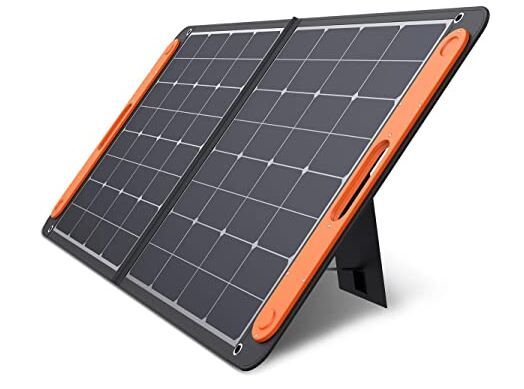In the photovoltaic grid-connected system, the power of the module is related to the inverter, and the power matching of the module and the inverter is not a fixed ratio of 1:1. It needs to be considered in combination with the specific conditions of the project. The main influencing factors are radiation Power, system loss, inverter efficiency, inverter life, inverter voltage range, component installation angle, etc.
The inverter should generally be installed in a place with good ventilation and avoid direct sunlight, which is conducive to heat dissipation. If due to site constraints, the inverter has to be installed in a closed place that is not conducive to heat dissipation, the derating of the inverter must be considered and fewer components should be equipped.

When the plane of the object is completely perpendicular to the light, the received power is the largest. If the object is placed at an angle, the plane of the object and the light will be at a certain angle, and the received power will be discounted. For the same area, the received power will be much less. The angle between the module and the sun is perpendicular, and the power is maximum.
The output power of the module is related to the irradiance. In areas with good solar energy resources, due to fewer clouds on sunny days, good air quality, and high atmospheric transparency, the solar radiation reaching the surface of the module is much higher than the average value in areas with poor resources.
The higher the altitude, the thinner the air, and the smaller the weakening effect of the atmosphere on solar radiation, the stronger the solar radiation reaching the ground. For example, the Qinghai-Tibet Plateau is the region with the strongest solar radiation in China. Where the air is thinner, the heat dissipation of the inverter will be worse. If the altitude exceeds a certain height, the inverter must be derated.
In a photovoltaic system, energy is radiated from the sun to photovoltaic components and reaches the inverter through DC cables, combiner boxes, and DC power distribution. There is a loss in all links. Different design schemes, such as using centralized type, string type, distributed type, etc., have very different DC side losses.
Positive power tolerance: In order to satisfy that the attenuation of photovoltaic modules does not exceed 20% in 25 years, many module manufacturers have a positive tolerance of 0-5% for modules that have just been shipped. For example, for 265W modules, the actual power that has just been shipped maybe 270W.
Negative temperature coefficient: The power temperature system of the module is about -0.41%/℃. When the temperature of the module drops, the power of the module will increase.
Double-sided module: The double-sided module can not only receive the radiation power of the front sunlight, but the back can also receive the reflected radiation power of the sunlight. Different objects have different reflectivity to sunlight in different spectral bands. Snow, wetland, wheat, desert, different features have different reflectivity in the same waveband, and the same feature has different reflectivity in different wavebands

Inverter efficiency: The efficiency of the inverter is not constant. There are power switching device losses and magnetic losses. At low power, the efficiency is relatively low. When the power is 40% to 60%, the efficiency is the highest. When it exceeds 60%, efficiency gradually decreases. Therefore, the total power of photovoltaic power should be controlled between 40% and 60% of the inverter power to obtain the best efficiency.
The optimal working voltage range of the inverter: the working voltage is about the rated working voltage of the inverter, and the efficiency is the highest, single-phase 220V inverter, inverter input rated voltage is 360V, three-phase 380V inverter, inverter The rated input voltage of the converter is 650V.
Inverter life: photovoltaic inverters are electronic products, and their reliability is closely related to the inverter operating temperature. The temperature of capacitors, fans, relays, and other components can be increased by 10℃, and the failure rate can be increased by more than 50%. The operating temperature is also related to power. According to statistics, the inverter works at a power of 80-100% for a long time than a power of 40-60%, and its lifetime is about 20% lower.